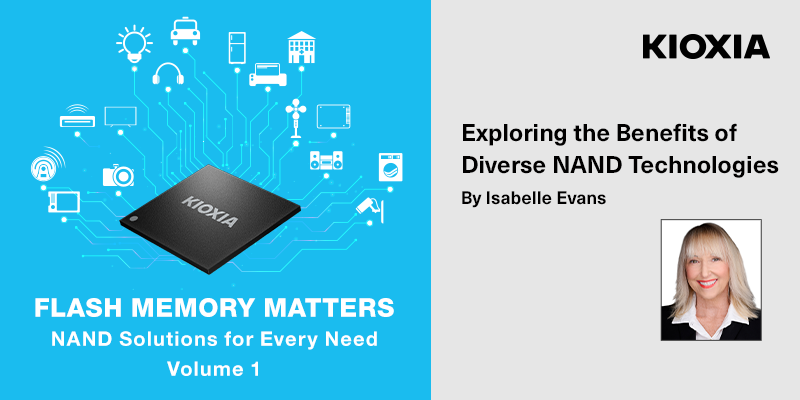
Exploring the Benefits of Diverse NAND Technologies
When it comes to determining what kind of memory is most suitable for a given end product, it’s only natural that you have questions. Lots of questions.
How much data will be stored on the device? What type of environment will the product be operated within? Is the use case write or read intensive and how long will it have to last? Will the processor need to boot from the memory? Will sensitive files be stored? And so on and so on…
As the inventors of NAND flash, we’re here for you – and we have answers. In fact, we’ve created an educational blog series – FLASH MEMORY MATTERS - to help guide you through the decision-making process. In the FLASH MEMORY MATTERS series we’ll explore the various KIOXIA memory solutions and point to the features and functions that make each the memory of choice for your application.
Look at How Far We’ve Come
When we look back to the beginning, the NAND options were limited. The first real commercial product was a 16 megabit (Mb) SLC (single-level cell) NAND device. Eventually, the product offering grew to include storage capacities of up to 64Mb.
Today, NAND devices are available in densities from 1 gigabit to 8 terabits and in SLC, MLC (multi-level cell), TLC (triple-level cell) and QLC (quad-level cell) variants. There are commercial grade, enterprise/data center grade, industrial and automotive grade NAND flash options to meet the diverse requirements of an expanding market.
With all of that being said, an obvious conclusion can now be drawn: one size (and type of flash) simply does not fit all. Variety has not only become important, it is essential in addressing the many different end products requiring storage.
Decisions, decisions! With so many options available – how do you know which NAND flash is right for you?
That’s where we come in. Next month in FLASH MEMORY MATTERS, we’ll dive into the applications that will benefit most by using UFS over e-MMC – and vice versa. Stay tuned!
Notes:
Universal Flash Storage (UFS) is a product category for a class of embedded memory products built to the JEDEC UFS standard specification. Due to its serial interface, UFS supports full duplexing, which enables both concurrent reading and writing between the host processor and UFS device.
All other company names, product names and service names may be trademarks of their respective companies.
Definition of capacity: KIOXIA Corporation defines a megabyte (MB) as 1,000,000 bytes, a gigabyte (GB) as 1,000,000,000 bytes and a terabyte (TB) as 1,000,000,000,000 bytes. A computer operating system, however, reports storage capacity using powers of 2 for the definition of 1GB = 2^30 bytes = 1,073,741,824 bytes and 1TB = 2^40 bytes = 1,099,511,627,776 bytes and therefore shows less storage capacity. Available storage capacity (including examples of various media files) will vary based on file size, formatting, settings, software and operating system, and/or pre-installed software applications, or media content. Actual formatted capacity may vary.